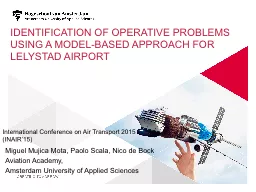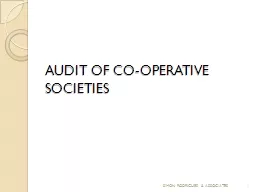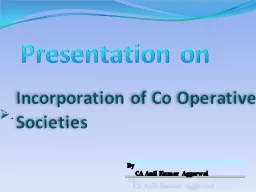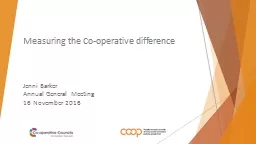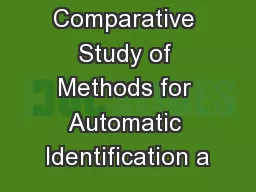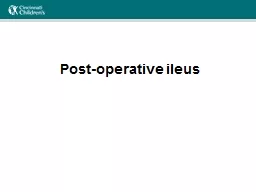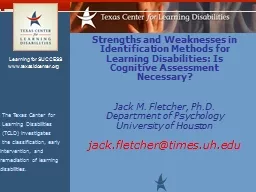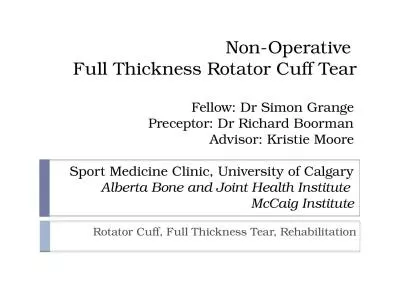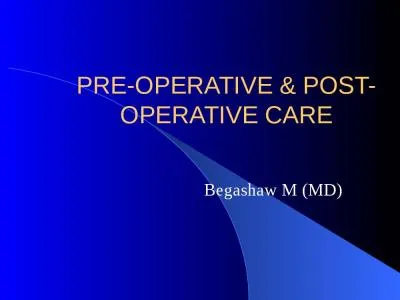PPT-Identification of Operative Problems using a model-based ap
Author : briana-ranney | Published Date : 2016-10-13
Miguel Mujica Mota Paolo Scala Nico de Bock Aviation Academy Amsterdam University of Applied Sciences 1 International Conference on Air Transport 2015 INAIR15
Presentation Embed Code
Download Presentation
Download Presentation The PPT/PDF document "Identification of Operative Problems usi..." is the property of its rightful owner. Permission is granted to download and print the materials on this website for personal, non-commercial use only, and to display it on your personal computer provided you do not modify the materials and that you retain all copyright notices contained in the materials. By downloading content from our website, you accept the terms of this agreement.
Identification of Operative Problems using a model-based ap: Transcript
Download Rules Of Document
"Identification of Operative Problems using a model-based ap"The content belongs to its owner. You may download and print it for personal use, without modification, and keep all copyright notices. By downloading, you agree to these terms.
Related Documents

